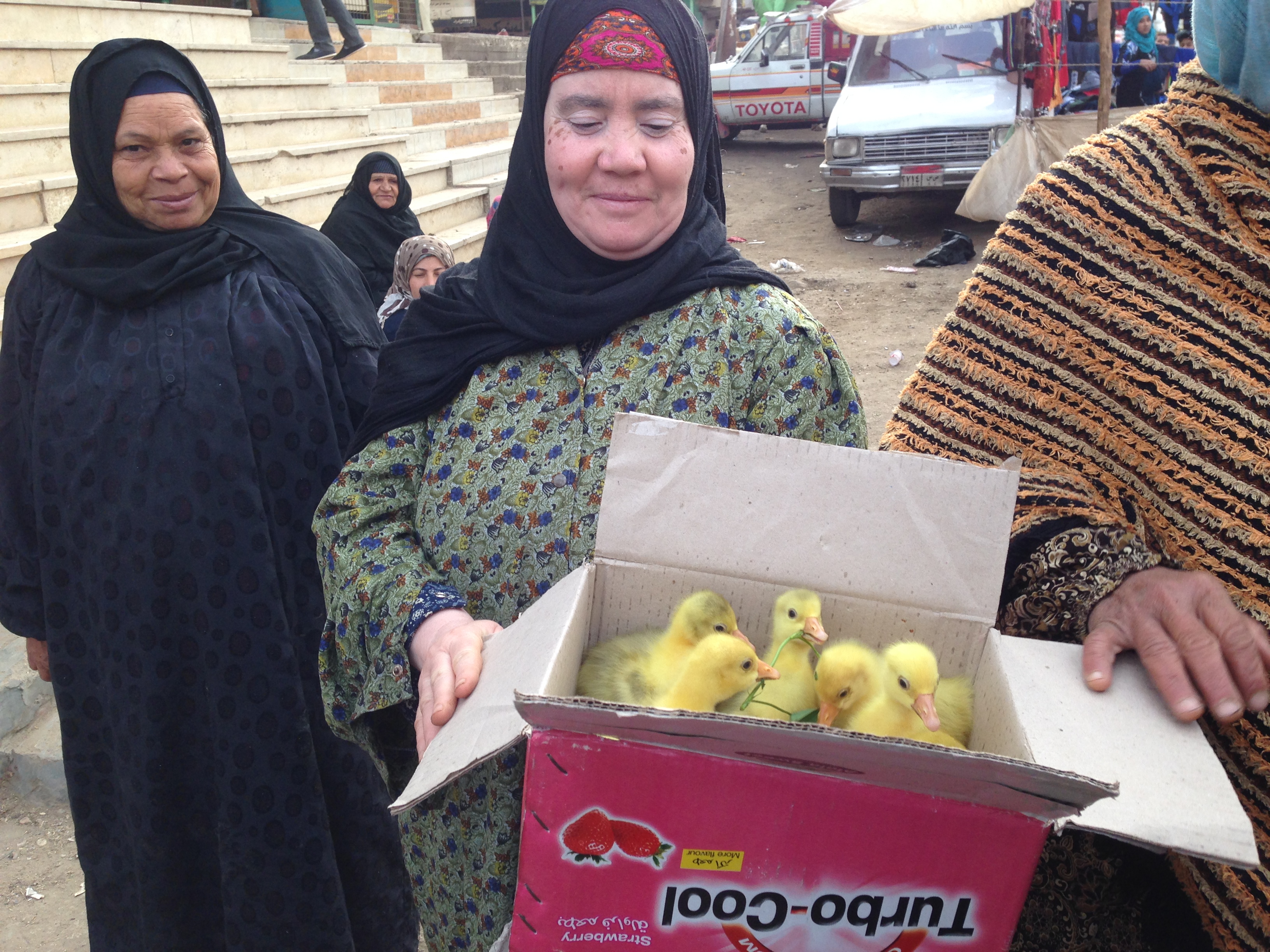
Egyptian woman holding box of ducklings. Ducks and other birds play a major role in the transmission of avian influenza (Photo: WHO).
Avian influenza, also known as bird flu, is a type of zoonotic (or animal) influenza that affects wild birds and poultry and is caused by virus sub-types A(H5N1), A(H9N2). Avian influenza has occasionally infected humans; however it does not easily transmit between humans. The majority of human cases of avian influenza have been associated with direct or indirect contact with infected live or dead poultry.
Since it was first reported in Hong Kong in 1997, the disease has been responsible for human outbreaks and deaths in 16 countries in Africa, Asia, Europe and the Middle East. In 2006, avian influenza caused by the highly pathogenic A(H5N1) influenza virus spread rapidly through the Eastern Mediterranean Region with large non-human outbreaks reported in Afghanistan, Djibouti, Egypt, Iraq, Jordan, occupied Palestinian territories, Pakistan and Sudan. Transmission of the A(H5N1) influenza virus from infected birds to humans was confirmed in Djibouti, Egypt, Iraq and Pakistan and. Since then, avian influenza has become endemic among poultry in Egypt.
The incubation period for the A(H5N1) ranges from 2 to 5 days on average and up to 17 days. Symptoms of infection in humans include fever, malaise, cough, sore throat, and muscle aches. Severe disease and death may result from a complication of pneumonia. The case fatality rate for avian influenza among humans is much higher than that for seasonal influenza infection.





